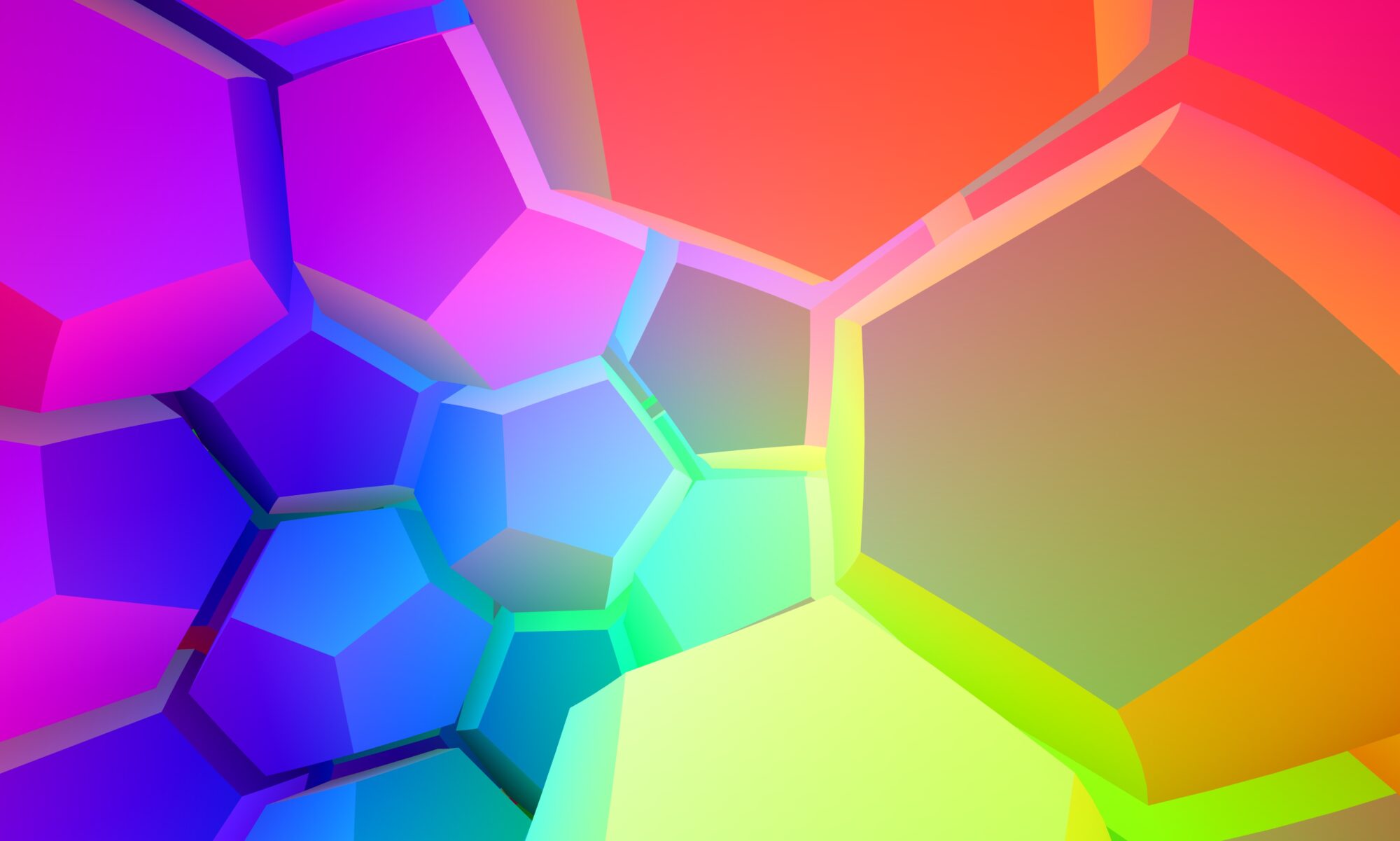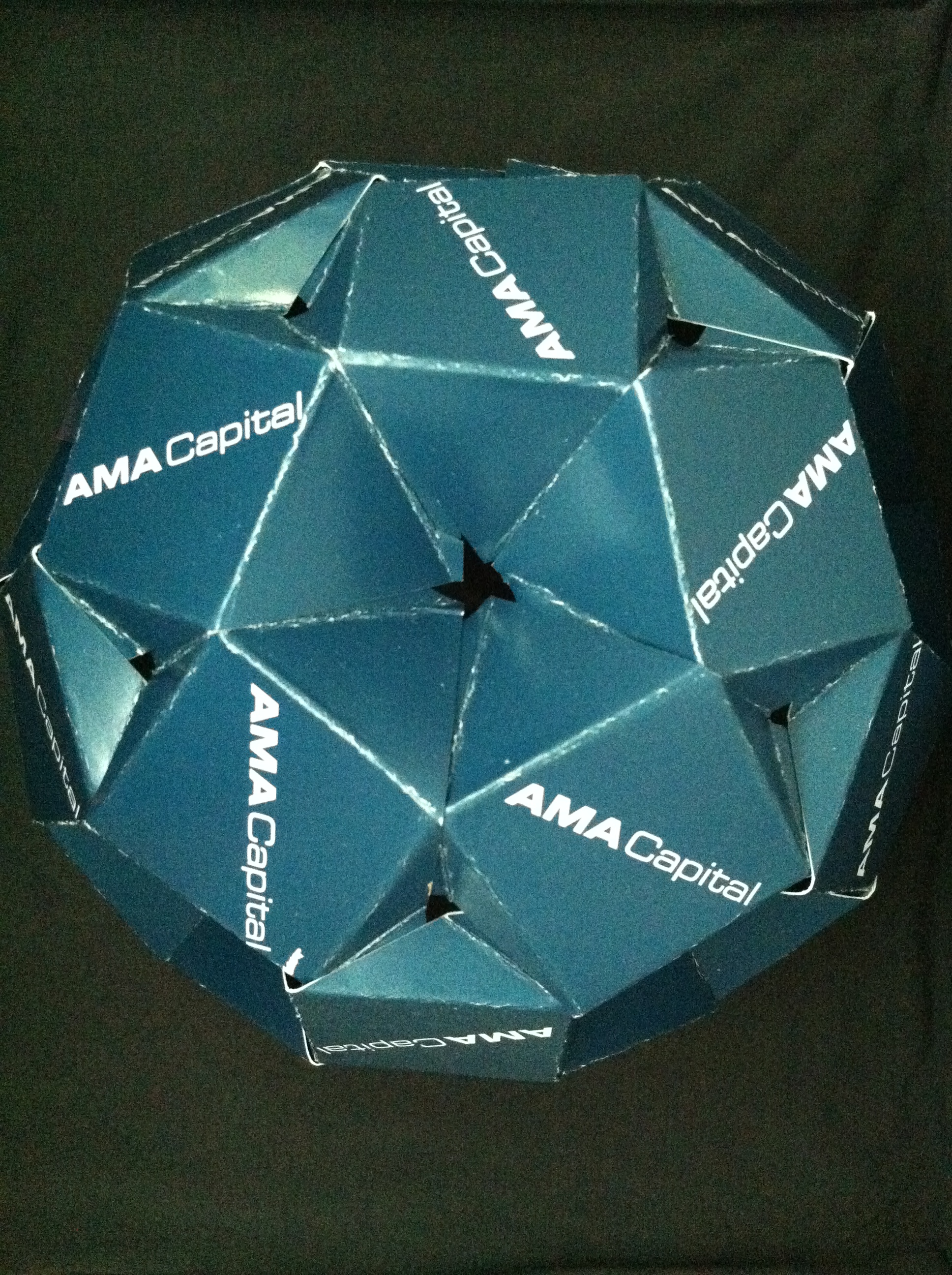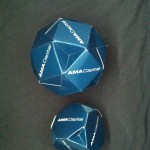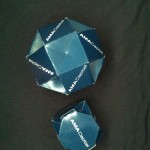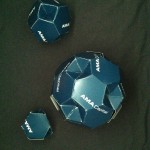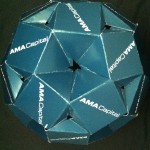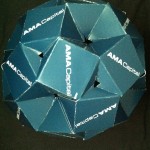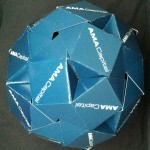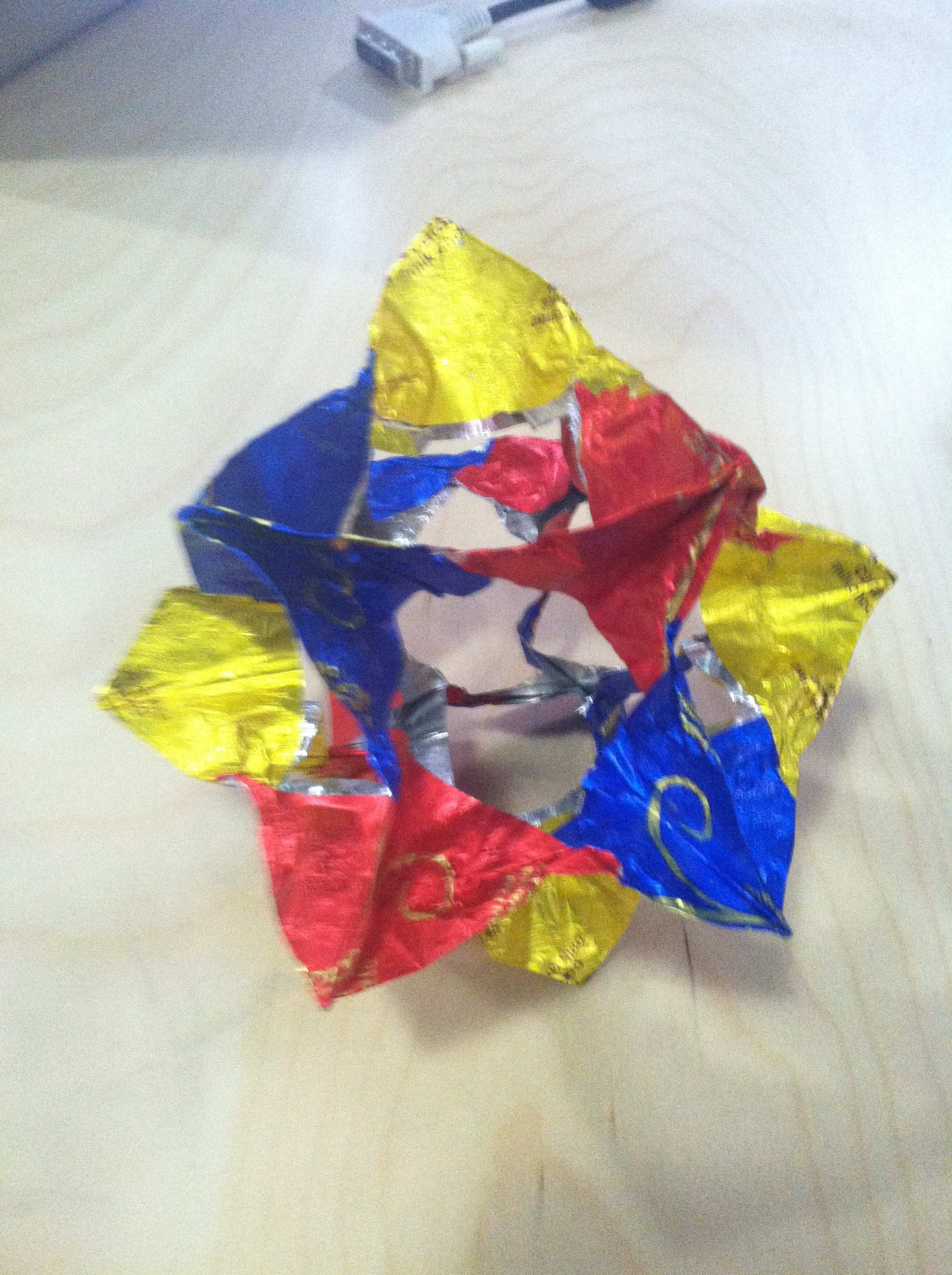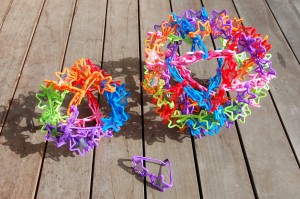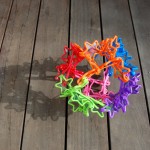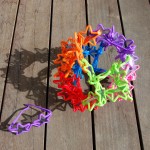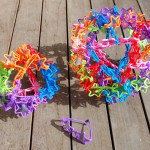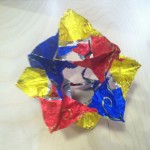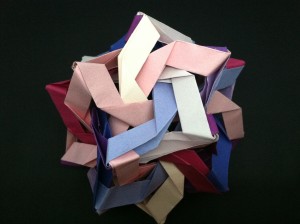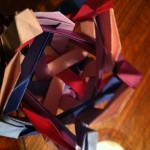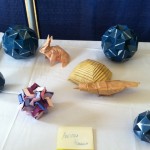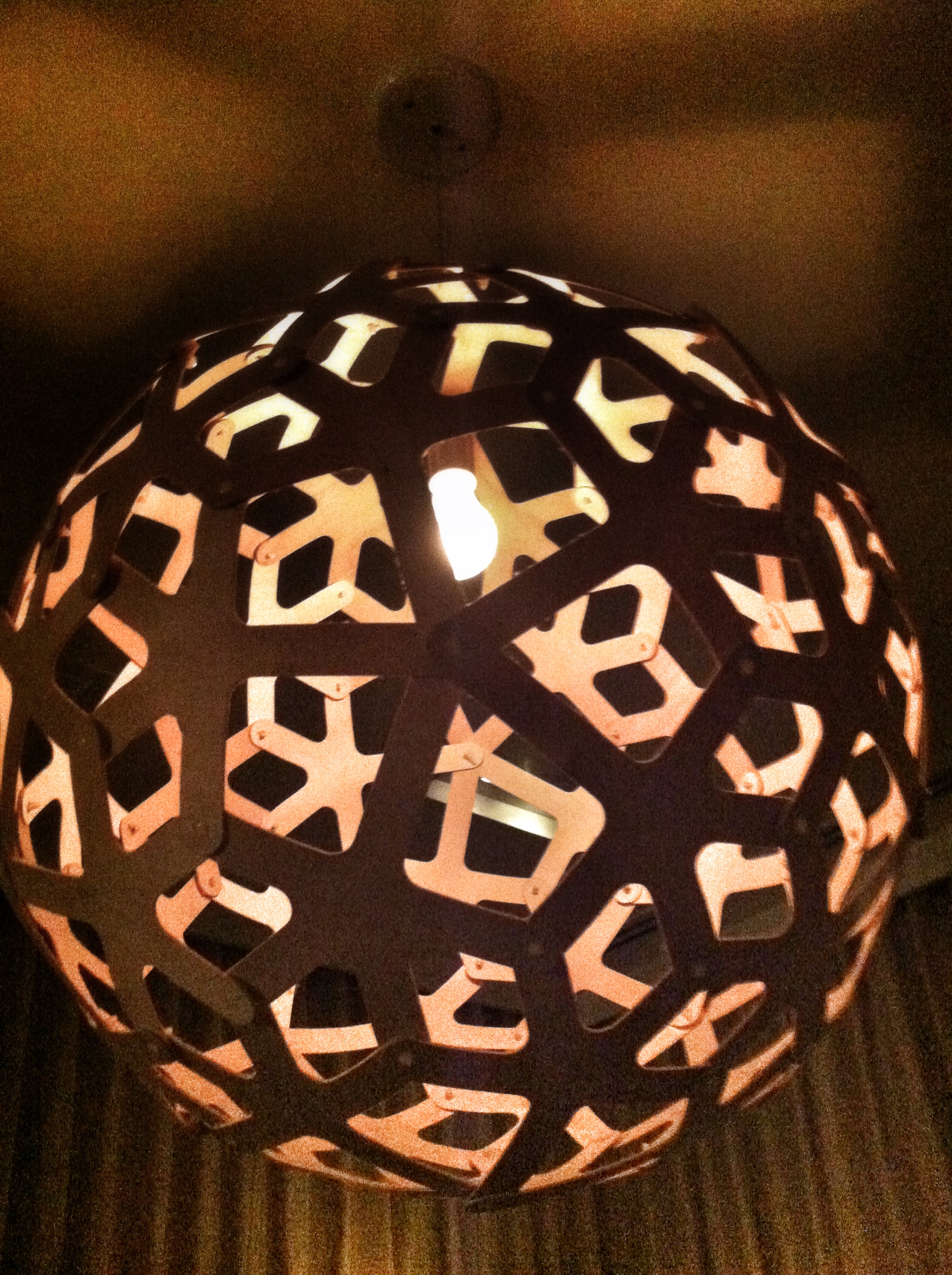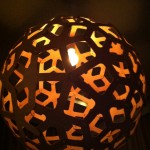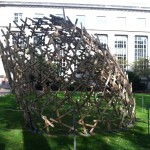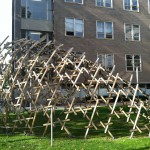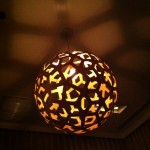are a fun way to use up the excessive quantities of old business cards that my friends give me (which, of course, they are giving me because of my propensity to fold them into things – a most excellent cycle).
Thus far, I have come up with modules and designs for the truncated tetrahedron, truncated cube, truncated cuboctahedron, rhombicuboctahedron, truncated icosahedron, and rhombicosidodecahedron. I wouldn’t be surprised if some (or even all) of these designs were examples of parallel invention, but I haven’t seen any of them elsewhere as yet, and I certainly had a fun time coming up with and building them, which is probably the important part.
